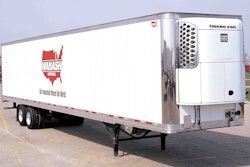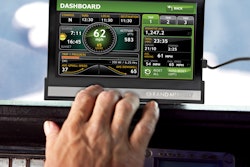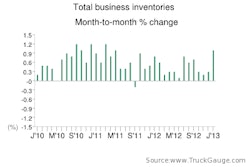“I’m not a big fan of vertical integration,” Russ Thompson, vice president of equipment purchasing and shop operations, Swift Transportation, told supplier attendees during a panel discussion at last week’s Heavy Duty Dialogue in Nashville, which was produced by the Heavy Duty Manufacturers Association. “We need choice. We continue to push for choice,” he said.
“We like to spec,” said Dwayne Haug, executive vice president equipment purchasing, Werner Enterprises. “Everyone operates just a little bit differently.” OEMs have a responsibility to design and produce equipment that fleets will want to run for 4-5 years and then realize a good return on their investment, he said. But companies such as Eaton, represented by panel moderator Ken Davis, president of Eaton’s Vehicle Group, “are testament to the fact that spec’ing is alive and well,” Haug said. If independent suppliers don’t produce great products, “than the OE may try and pick up something on his own. If you’ve still got a better widget, you’ve still got a better widget.”
Environmental and safety regulations have driven up the cost of equipment significantly in the last decade, making finding ways to manage those costs a major focus, panelists said. “What it’s done to all of us is we’ve had to manage those cost increases from within,” Haug said. “We haven’t been able to do them from outside sources.”
To reduce costs, Swift has increased its day cab fleet, mostly on dedicated hauls, Thompson said, although sleeper cabs will remain critical to the company’s line-haul applications. Improved fuel economy has also helped fleets manage higher equipment costs. “OEMs have really gotten on board with fuel economy in recent years,” he said. “That used to be left to the fleet. That has helped our total cost of ownership.”
When it comes to improving fuel economy, Swift focuses on the truck first because it’s more difficult to see returns on the trailer given the typical 3-to-1 trailer to truck ratio, Thompson said. “It’s gotten to the point it’s very hard to measure because the 1 percent improvements we’re now going for are almost too small to measure.”
Haug agreed. “You may have a product that’s supposed to give X percent aerodynamics or fuel economy improvement, but when you meld it with everything else it becomes insignificant,” he said.
Another factor is that drivers don’t drive 62 mph all the time, “so it’s hard to realize the full benefits [as advertised],” Thompson said.
Finding technicians is another challenge fleets face today, the panelists said. “Our technician workforce is graying and aging probably faster than our driver workforce,” Haug said.
The skills required to maintain and repair trucks are also changing rapidly, they said. Charging systems and A/C systems used to be the number one and two areas needing the most attention, Thompson said. “Now it’s emissions systems,” he said. “It’s far more complex. You’d better be an expert in 200 areas today.”
To ensure their technicians can handle these changes, “we’ve become an intense training company,” Thompson said. Swift has about 1,000 technicians who took about 30,000 online courses last year, he said.
Changes Swift and Werner see coming include a greater shift toward automatic transmissions. With the trend toward down-speeding of engines to improve fuel economy, “you’re going to have to have an automatic,” Thompson said. “I see them becoming more and more prevalent, not less.”
“With the fuel systems that we have today and the splits for the transmissions we definitely see it coming on the horizon,” Haug agreed. “But it goes to our trade cycle. We still have some work to do on the front end to make it affordable but we also need to look at the secondary market,” he said. “We’re trying to spec for 4-5 years down the road.”












